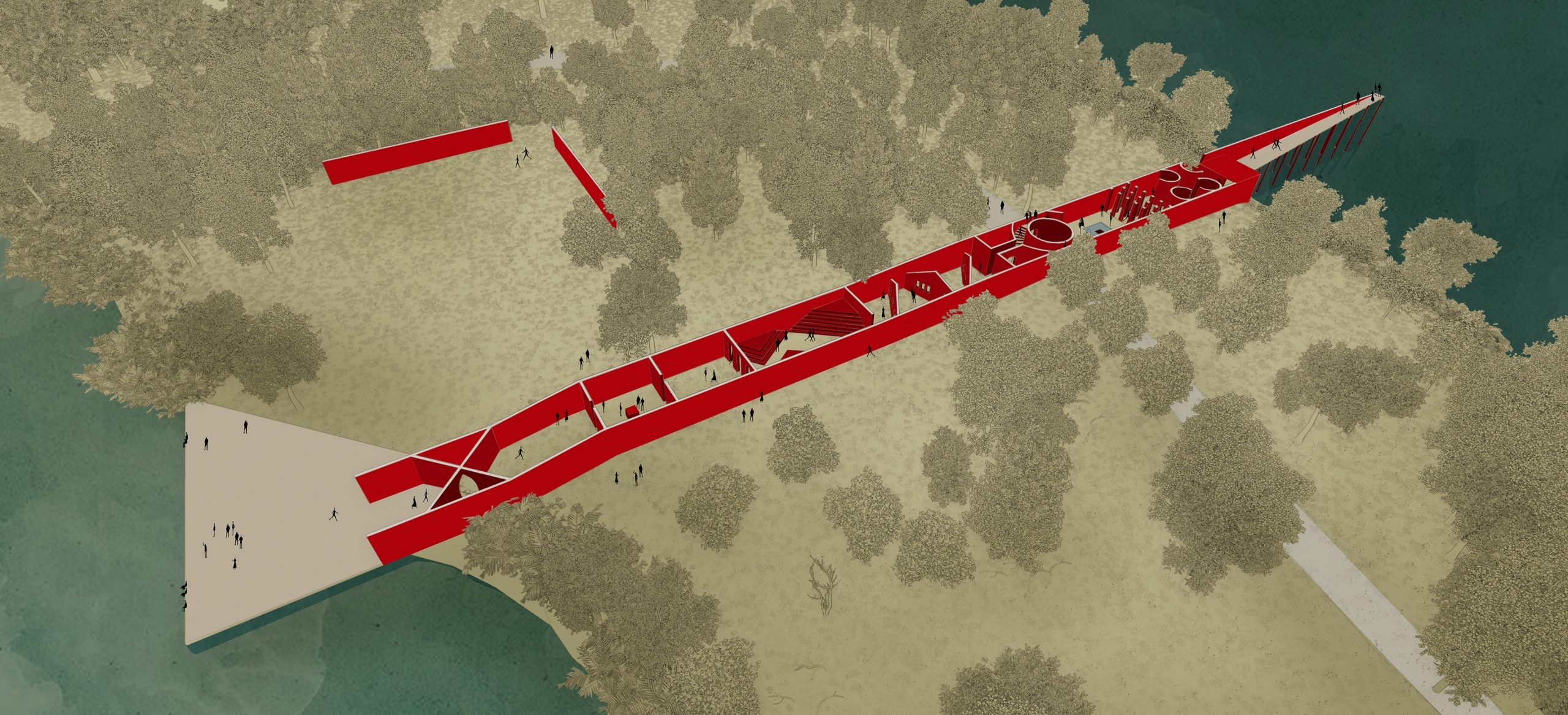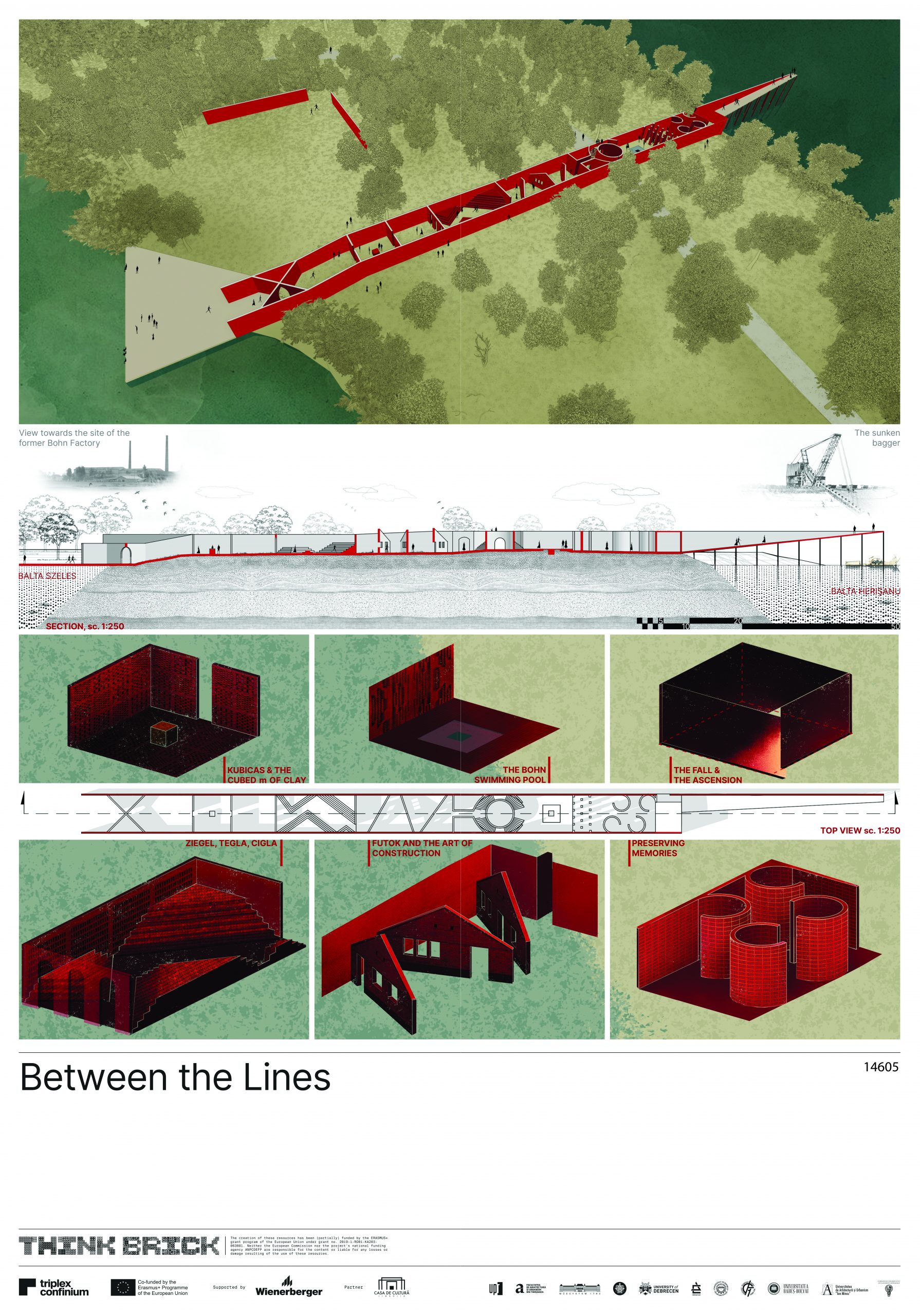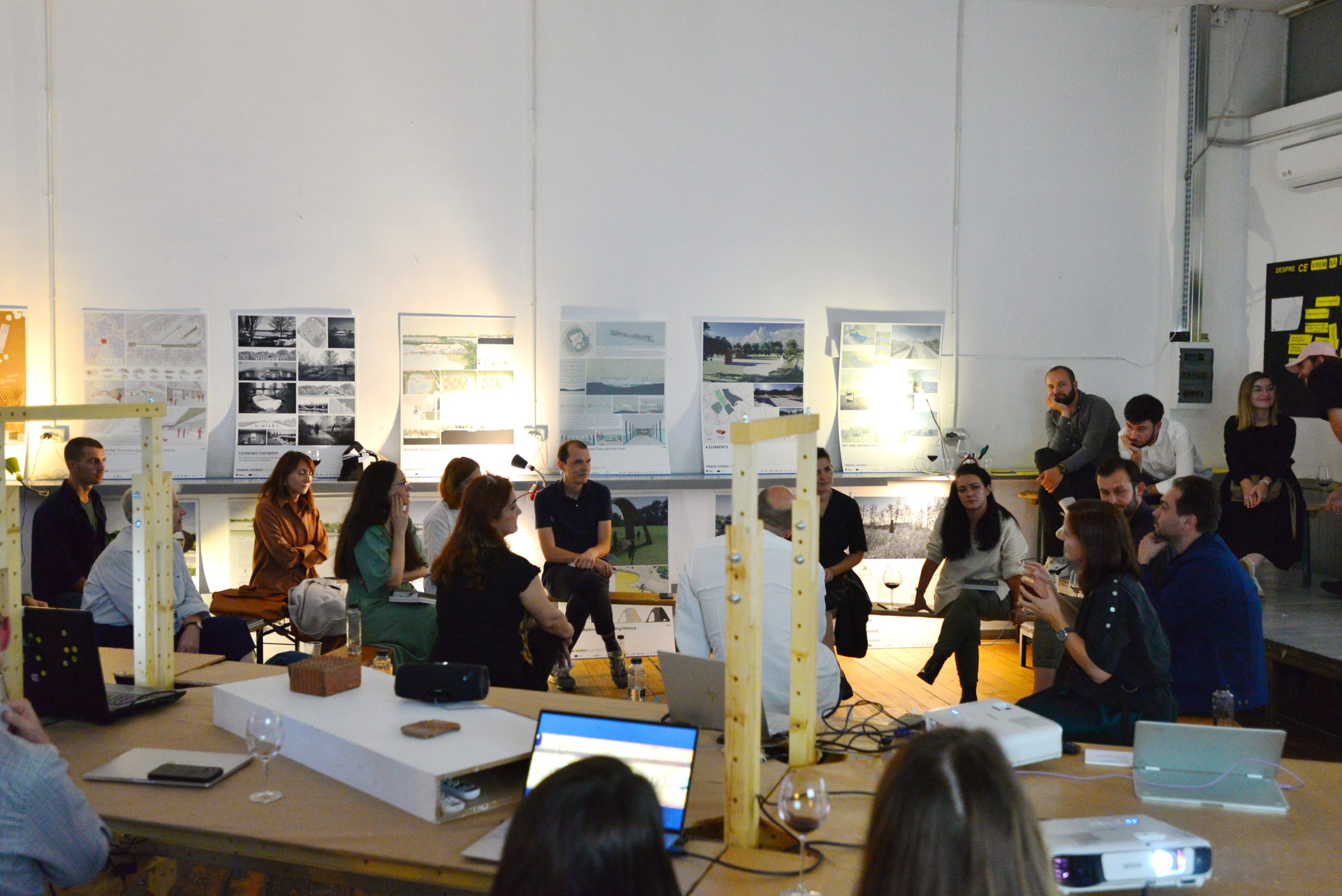
BETWEEN THE LINES
Laura Argeșeanu and Iancu Jacqueline – Faculty of Architecture and Urbanism of Timișoara
1st PRIZE – THINK BRICK Competition
The project proposes a brick line that connects Balta Szeles and Balta Herișanu at the heart of the quarry lakes in Jimbolia. This is a discreet, theoretically minded and historically reflexive intervention into a fragile environment. It responds to the requirements of the competition and it is mindful of the past of the city. The dialectic of memory and erasure represents the core of this simple, but sophisticated project. Based on ethnographic research with people in Jimbolia, the project seeks to give shape and visibility to the industrial relations that formed the lakes in the first place, without disturbing the biodiversity of the area in the post-industrial present. The goal to save the multi-layered and multi-ethnic history of the city’s trajectory in modernity renders the brick wall as a lieu de mémoir – simultaneously a museum, a monument and a landmark. This is welcome since in the present the memory places in the city are scattered and most of them in ruin. Thus, the brick wall does not fulfill a separation function, but it acts as a bridge between the past and the present; it does not divide (as walls usually do), but it protects.
Initially, the brick wall seems to be randomly cutting through the wildlife. From this perspective it does bespeak a common experience in Jimbolia where a trip through its surroundings will inevitably at one point offer the encounter with random ruins from every period, especially the industrial one. But the brick wall envisaged by the project has a door that opens onto an open-air museum – this is the element of surprise of the project. The wall protects the history of the place. Intra muros a succession of six sequences tells the story of the ceramic industry in Jimbolia: 1) the foundation of the Bohn factory and the kubikas that dug clay to generate its raw material, 2) the professionalization of tile production in a multi-ethnic environment 3) the development of Futok neighborhood, 4) the everyday life of the working class in the area embodied by the Futok swimming pool, 5) the voices of the workers that embody the history and memory of the community, 6) the decline and disappearance of the ceramic industry and the ruins it left behind. The six stages/rooms are accompanied by a prologue and an epilogue thus highlighting the sense of narrative that the museum wants to simultaneously present and embody. The rooms are of different shapes, not overly designed and the brick element is mobilized in order to express its various usages and articulations in different historical times. By virtue of its structure, the museum draws the visitors into the narrative, pushing them to discover what follows next. In this way the natural landscape of the lakes is de-naturalized, integrated into a wider economic, social and cultural history that was completely erased. Hence the project offers a balance between the object (the museum), land art and architecture in order to highlight a composite history.
One element of concern in relation to this project is the narrow nature of the rooms and the passages between them – at least judging from the submitted materials. Another question mark relates to the sustaining pillars of the “epilogue” – how much of an intervention their construction will entail.
All in all this is a thoughtful project that can attain various functions for the community and can become a catalyst for the preservation of memory in Jimbolia but also for a non-intrusive, insightful and ecological social life around the lakes. Jury Report









